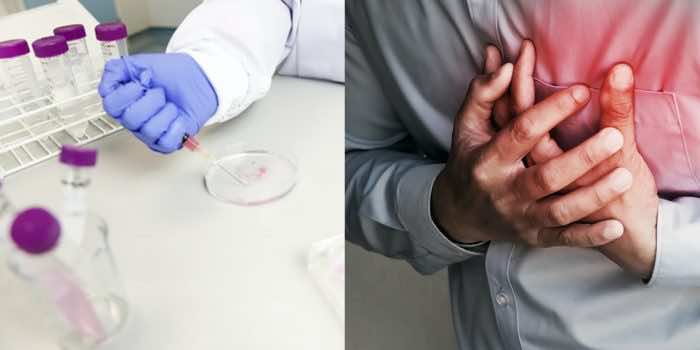Researchers from the University of Manchester carried out research funded by the British Heart Foundation (BHF) and have developed a new biodegradable gel that can help improve the delivery of cells directly into the living heart and could form a new generation of treatments to repair damage caused by a heart attack.
The research is being presented at the British Cardiovascular Society conference in Manchester.
The researchers are optimistic that their gel will become a key part of future regenerative treatments for damaged hearts.
Katharine King, a BHF-funded Ph.D. student at the University of Manchester, led this research. She said: “The heart has a very limited ability to repair any damage it sustains. Our research has been looking for ways to overcome this so we can keep the heart in a healthier place for longer.

“While it’s still early days, the potential this new technology has in helping to repair failing hearts after a heart attack is huge. We’re confident that this gel will be an effective option for future cell-based therapies to help the damaged heart to regenerate.”
For the treatment to be successful, a good blood supply will be important for the injected cells to develop into new tissue. The researchers observed early signs of blood vessel growth in the gel, proving the technology could enhance the growth of new vessels.
It was also demonstrated that the gel can support the growth of normal heart muscle tissue. When they added human cells reprogrammed to become heart muscle cells into the gel, they were able to grow them in a dish for three weeks and the cells started to beat spontaneously.
For a live experiment, the team injected the gel with a fluorescent tag into the hearts of healthy mice. The fluorescent tag revealed that the gel remained in the heart for two weeks. Echocardiograms (ultrasounds of the heart) and electrocardiograms (ECGs, which measure the electrical activity of the heart) confirmed that the injection is safe for the heart.
The researchers now plan to try this treatment in mice straight after a heart attack.

The gel is made of chains of amino acids called peptides, the building blocks of proteins. The bonds between the peptides mean that the gel can exist in different states. When it’s under stress the peptides disassemble and behave like a liquid, making it ideal for injecting. When the stress is removed the peptides re-assemble and behave like a solid, holding the cells in place as they graft onto the heart.
Professor James Leiper, Associate Medical Director at the British Heart Foundation, said: “We’ve come so far in our ability to treat heart attacks, and today more people than ever survive. However, this also means that more people are surviving with damaged hearts and are at risk of developing heart failure.”
“This new injectable technology harnesses the natural properties of peptides to potentially solve one of the problems that have hindered this type of therapy for years. If the benefits are replicated in further research and then in patients, these gels could become a significant component of future treatments to repair the damage caused by heart attacks.”


